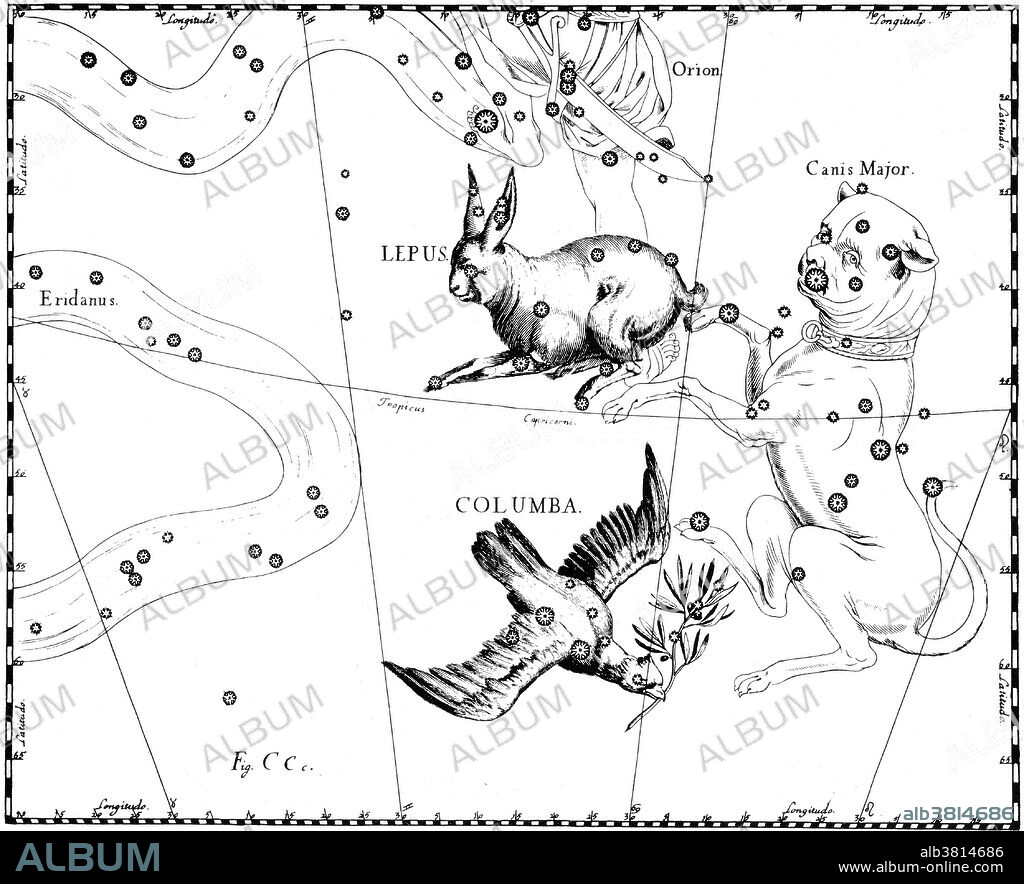alb3814686
Lepus Constellation, Hevelius, 1687

|
Zu einem anderen Lightbox hinzufügen |
|
Zu einem anderen Lightbox hinzufügen |



Haben Sie bereits ein Konto? Anmelden
Sie haben kein Konto? Registrieren
Dieses Bild kaufen

Titel:
Lepus Constellation, Hevelius, 1687
Untertitel:
Siehe automatische Übersetzung
Lepus constellation from Johannes Hevelius' Prodromus astronomiae, Firmamentum Sobiescianum, sive Uranographia, 1687. Lepus is a constellation lying just south of the celestial equator, immediately south of Orion. Its name is Latin for hare. Although the hare does not represent any particular figure in Greek mythology, Lepus was one of the 48 constellations listed by the 2nd century astronomer Ptolemy, and it remains one of the 88 modern constellations defined by the International Astronomical Union. Lepus is most often represented as a rabbit being and is located below the constellation Orion (the hunter), whose hunting dogs (Canis Major and Canis Minor) pursue it. The Hevelius Firmamentum was the first star atlas to rival Bayer's Uranometria in accuracy, utility, innovation, and influence. Hevelius was perhaps the most active observational astronomer of the last half of the seventeenth century. His star atlas is notable for many reasons. It contains 56 large, double page engraved star maps. The star positions for the charts were derived from his own star catalog, based on his own observations, which was first published along with the atlas. It is unique among the Grand Atlases in choosing to depict the constellations as they would appear on a globe, that is, from the outside looking in, rather than from a geocentric point of view, as Bayer and most others adopted.
Bildnachweis:
Album / Science Source / New York Public Library
Freigaben (Releases):
Model: Nein - Eigentum: Nein
Rechtefragen?
Rechtefragen?
Bildgröße:
4500 x 3651 px | 47.0 MB
Druckgröße:
38.1 x 30.9 cm | 15.0 x 12.2 in (300 dpi)
Schlüsselwörter:
 Pinterest
Pinterest Twitter
Twitter Facebook
Facebook Link kopieren
Link kopieren Email
Email
